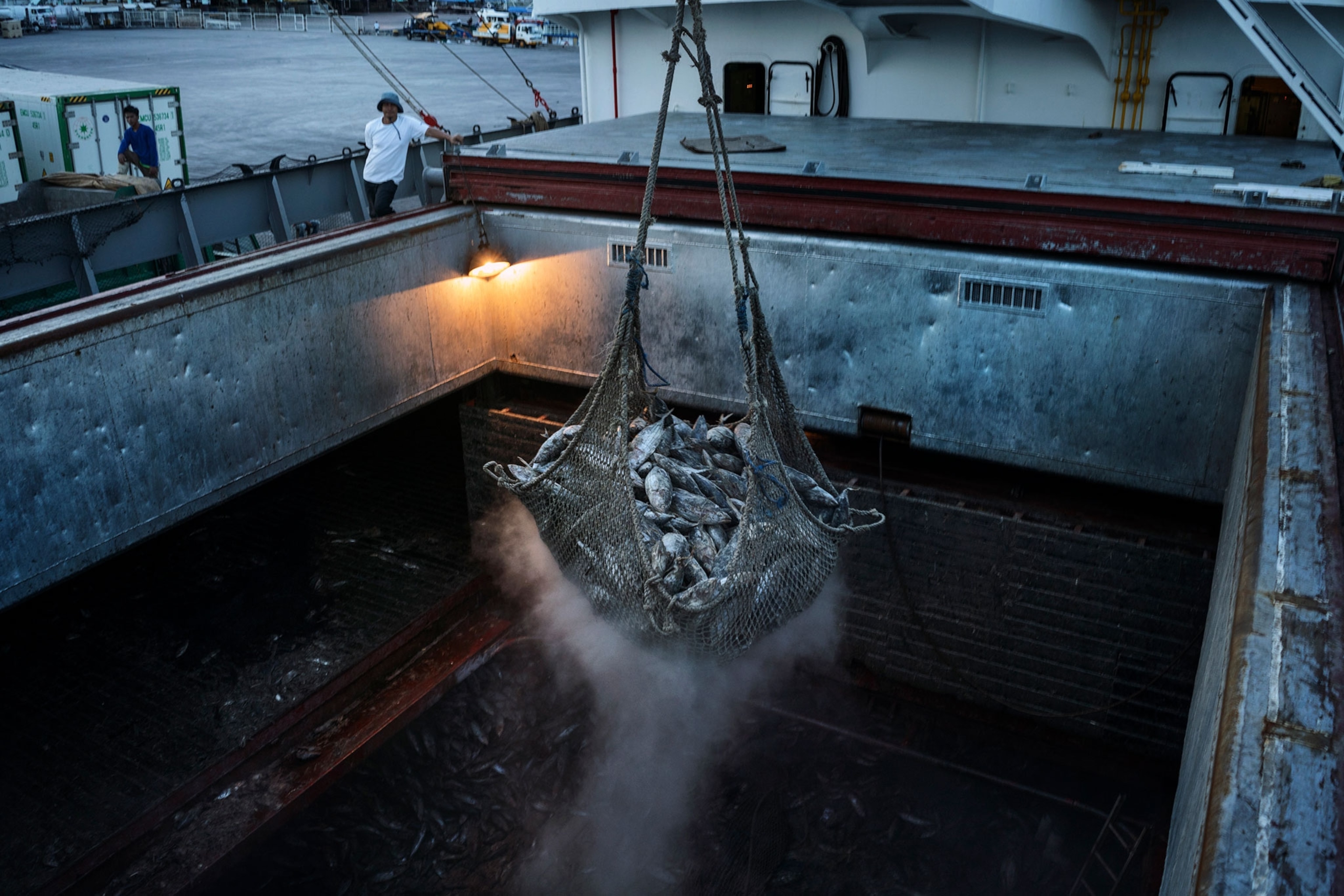One of the World's Biggest Fisheries Is on the Verge of Collapse
Major disputes in the South China Sea are putting critical habitat—and the food supply of millions—at risk.
PUERTO PRINCESA, Philippines — One time Christopher Tubo caught a 660-pound blue marlin in the South China Sea. That was years ago, when the fishing there was good, he says. He would come home from a trip with dozens of valuable fish like tuna and a haul of other species.
“Here there’s none of that,” he says, looking toward the Sulu Sea, the Philippine sea where he’s been fishing for the past four years. His two boats, traditional Filipino outriggers called bancas, float in the shallow water nearby, new coats of white paint on the decks, drying in the sun.
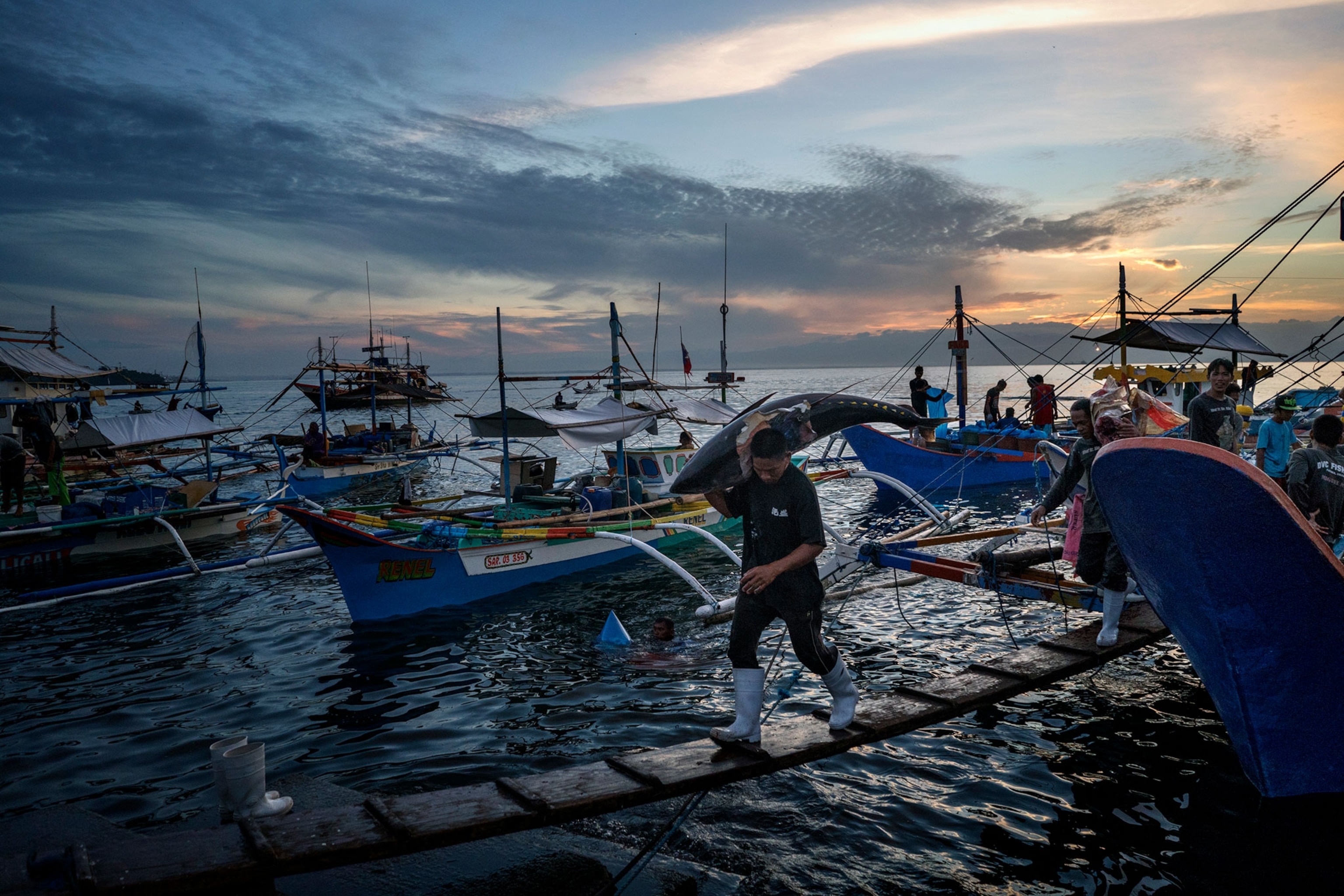
Tubo sits on a wooden bench in front of his home, which is perched on stilts above the bay. One of his four kids wraps an arm around his leg. Worn T-shirts and shorts flutter on clotheslines behind them.
(The Cham: Descendants of Ancient Rulers of South China Sea Watch Maritime Dispute From Sidelines)
Glancing at his wife, Leah, and the other children, he says, “It’s just chance, whether or not we can feed our families now.”
Tubo lives in Puerto Princesa, a city of 255,000 on Palawan, a long finger of an island that faces the Sulu Sea and the Philippine archipelago to the east and the contested South China Sea to the west. He’s one of the more than 320,000 fishermen in the Philippines who have traditionally made their livelihood from the South China Sea—and one of a growing number who are now fishing in other, less ecologically rich waters. That’s because about eight years ago China took a more assertive posture in the region, ramping up its intimidation of other fishermen and eventually building military installations on contested islands.
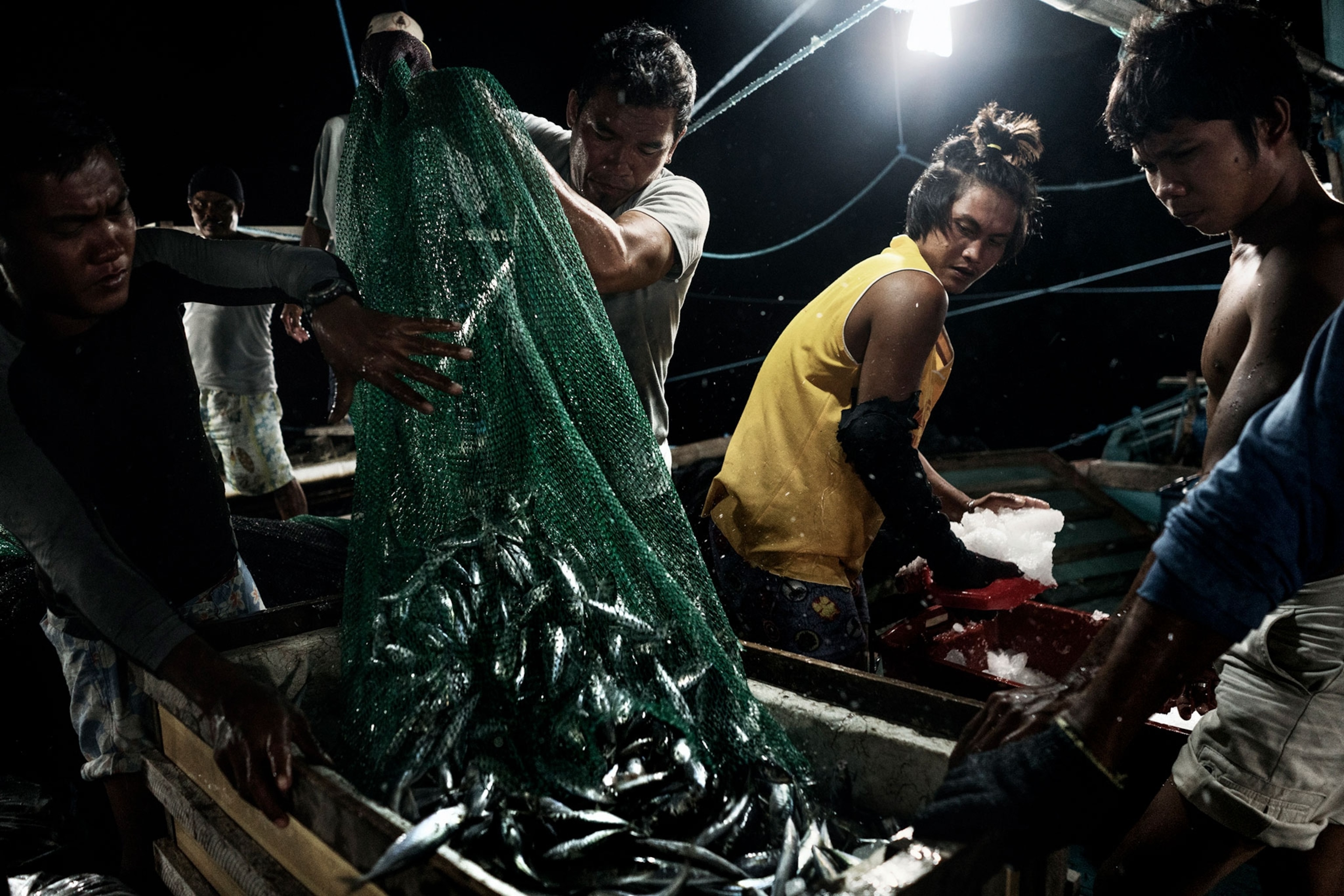
It was after a Chinese coast guard vessel attacked a friend’s boat with water cannons that Tubo quit fishing the South China Sea.
“One minute you’ll see an airplane, then there’s a naval boat,” he says. “If we keep going over there, maybe we won’t be able to go home to our families.”
“As they see it, it’s theirs now, and Filipinos are forbidden,” says Henry Tesorio, an elected councilor for a fishing village in Puerto Princesa.
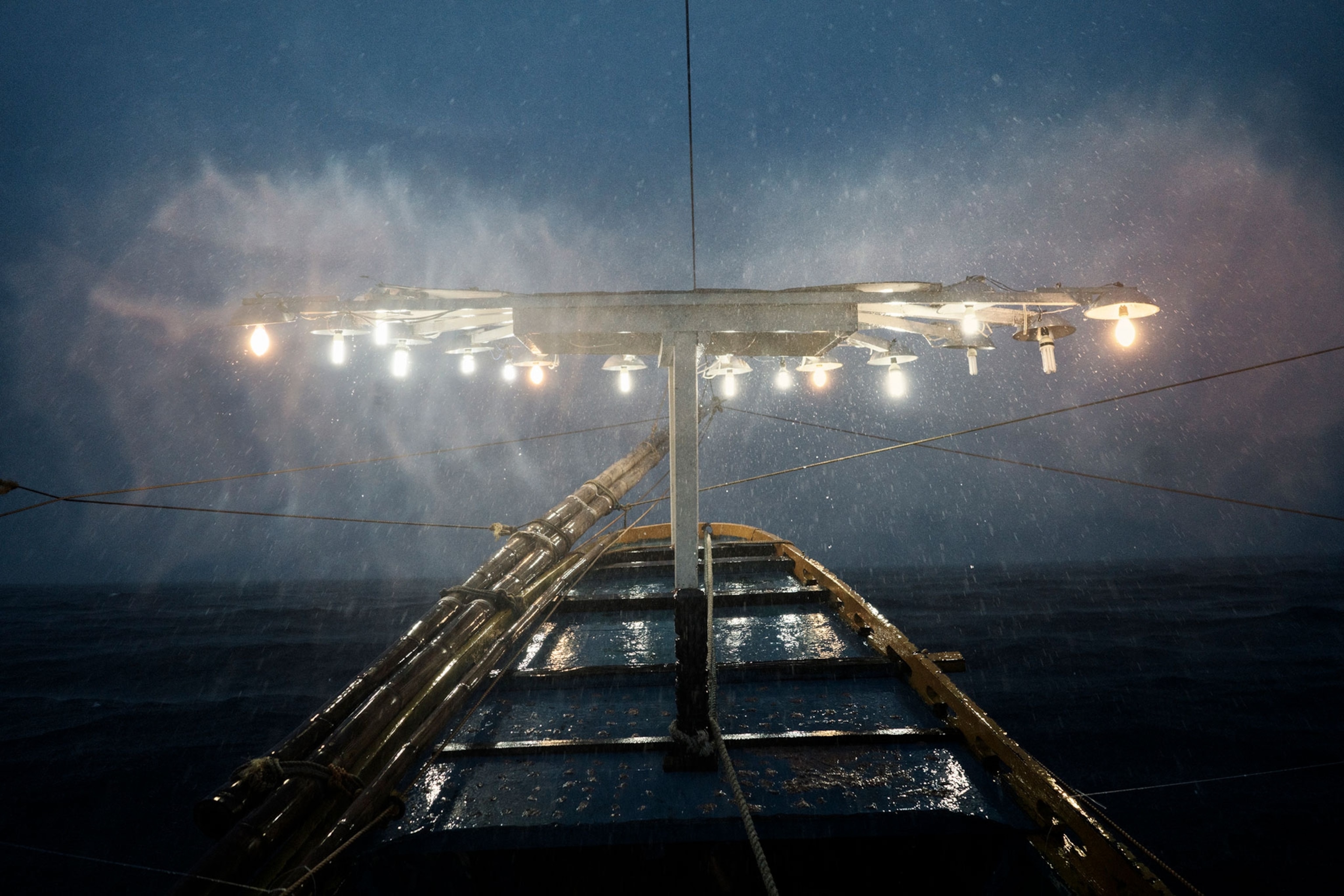
Vietnamese fishermen could say the same thing. Some 200 Vietnamese from the island of Ly Son, 15 miles off the mainland, reported being attacked by Chinese boats in 2015, according to local Vietnamese government officials.
Tubo’s decision is a reflection of the rising tensions in the region, which have ignited an increasingly fierce competition for natural resources, among other things. Encompassing 1.4 million square miles, the South China Sea is of critical economic, military, and environmental significance: Some $5.3 trillion in international trade plies its waters annually. It is richer in biodiversity than nearly any other marine ecosystem on the planet, and its fish provide food and jobs for millions of people in the 10 surrounding countries and territories.
Of those, seven—Brunei, China, Indonesia, Malaysia, the Philippines, Taiwan, and Vietnam—-have competing claims. If a military conflict were to break out, it could involve two world powers, China and the United States, a longtime ally of the Philippines. That’s why the dispute has commanded worldwide attention.
Another serious yet less publicized threat looms: overfishing. The South China Sea is one of the world’s most important fisheries, employing more than 3.7 million people and generating billions of dollars every year. But after decades of free-for-all fishing, stocks are dwindling, threatening the food security and economic growth of the rapidly developing nations that rely on them.
China asserts a right to almost the entire sea. It has demarcated a broad, U-shaped area that it says has historically been China’s but that under international law includes the waters of other nations (see map). Every other country in the South China Sea dispute, including the Philippines, bases its claims on the United Nations Convention on the Law of the Sea, the international pact that defines maritime zones and first went into effect in 1994.

Opposing Beijing's expansionist claims, in 2013 the Philippines brought a case against China before a tribunal at the Permanent Court of Arbitration, a forum for settling international disputes, in The Hague. China refused to participate. On July 12, 2016, the tribunal ruled in favor of the Philippines on almost all its claims, declaring that China had forfeited the possibility of any historically based rights when it ratified the UN convention in 1996. China vowed to ignore the tribunal’s ruling.
This dispute over the South China Sea intensifies competition among fishermen, and the resulting scramble for fish inflames the dispute. Today some waters have less than one-tenth of the stocks they had six decades ago. And high-value fish such as tuna and grouper are becoming scarcer.
“What we’re looking at is potentially one of the world’s worst fisheries collapses ever,” says John McManus, a marine ecologist at the Rosenstiel School at the University of Miami who studies reefs in the region. “We’re talking hundreds and hundreds of species that will collapse, and they could collapse relatively quickly, one after another.”
Fishermen on the Front Lines
When coastal waters became depleted, many fishermen were forced to venture beyond national limits and into disputed areas to make a living. Meanwhile China began bolstering its claims by aggressively supporting its fishermen. It has consolidated the coast guard, militarized fishing fleets, and promoted its subsidies for fuel and better boats. There’s even a subsidy specifically for Chinese fishermen to work the waters around the contested Spratly Islands, more than 500 miles to the south of China’s southernmost point (a port on the island of Hainan).
“The only reason that smaller [Chinese] fishermen go out to the Spratlys is because they’re paid to do so,” says Gregory Poling, the director of the Asia Maritime Transparency Initiative, at the Washington, D.C.-based think tank, the Center for Strategic and International Studies. This extra pressure has sped up the depletion of fish stocks, he says.
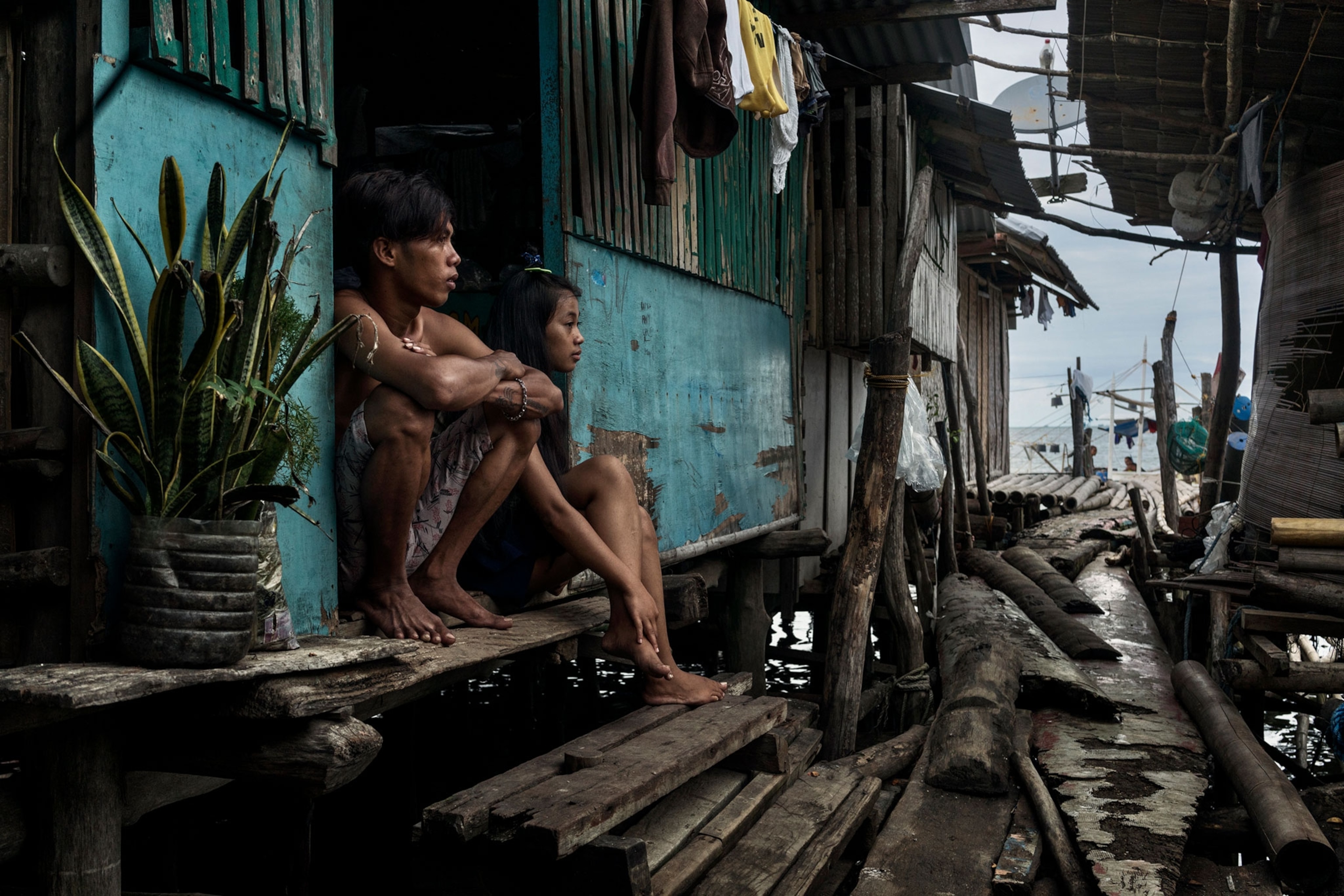
The Chinese also are building artificial islands atop reefs in the Spratlys to support military installations there. “Possession is nine-tenths of the law,” says Zachary Abuza, an expert on Southeast Asian politics and maritime security at the National War College, in Washington, D.C. “China is trying to enforce its sovereignty through the construction of these islands and by denying other countries access to natural resources.”
Eugenio Bito-onon, Jr., is a former mayor of the Kalayaan municipality that includes islands in the Spratlys. An outspoken advocate for the Philippines’ claims, he has seen firsthand how China uses its fishermen to strengthen its claim to the region. I met Bito-onon in the municipality’s cramped satellite office in Puerto Princesa, where the wall of one room displays a gigantic map of the South China Sea marked up with his own handwritten labels and colored dots showing which countries claim which features.
He pulled up Google Earth on his laptop and found Thitu Island, in the Spratlys known locally as Pag-asa, where some 200 Filipinos, including a small number of troops, live part-time, their presence demonstrating his country’s claim to the island. ice, clothing, soap, and other necessities must be brought in by boat or airlift, and two government-owned generators are the only source of electricity. Bito-onon pointed out just how close Chinese-claimed Subi Reef is to Thitu. So close, he said, that on a clear day residents can see it on the horizon.

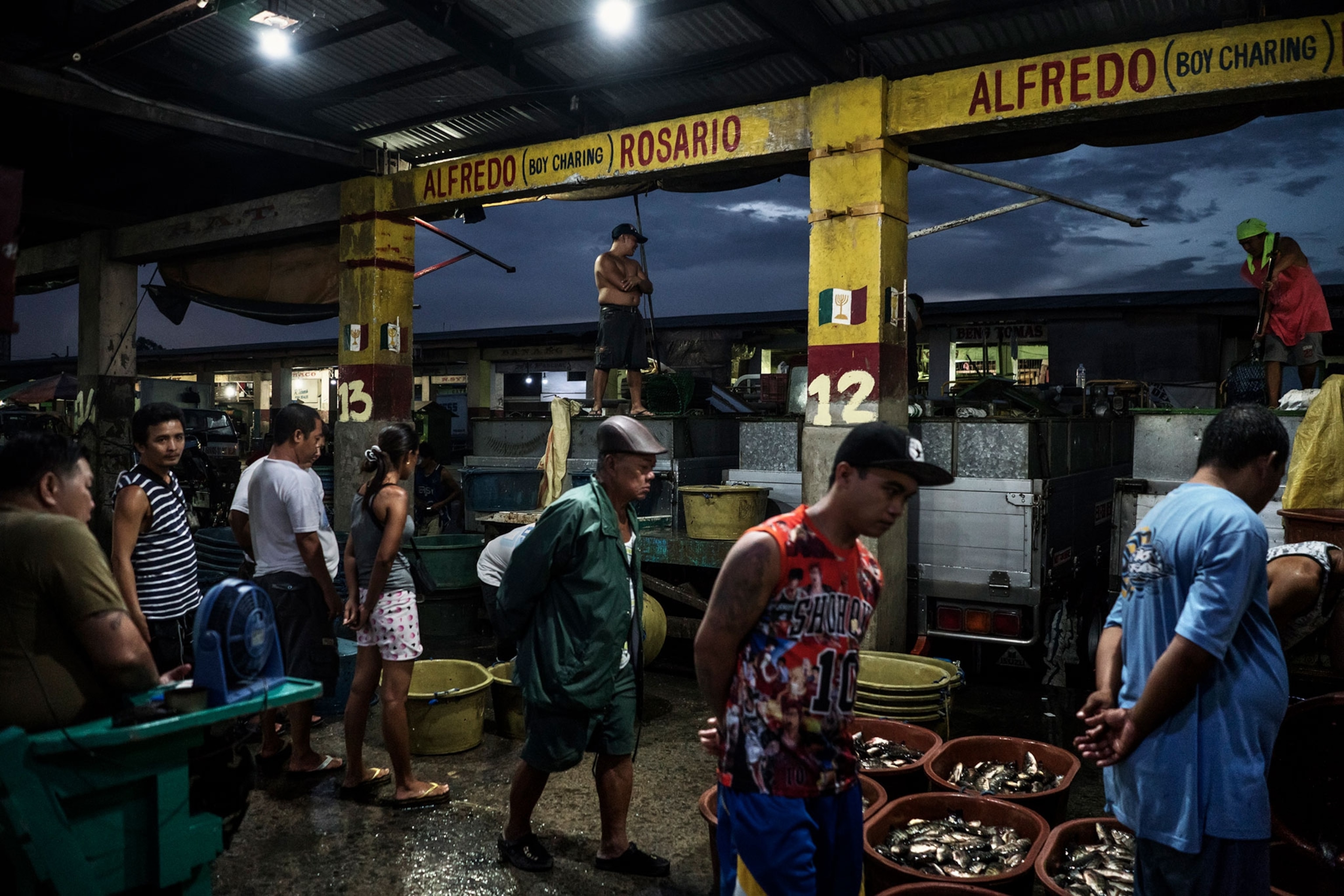
Even closer are Chinese fishing boats that he says have fished the reefs empty. “For the past three years, [the Chinese] never leave,” Bito-onon said from behind his laptop, now displaying satellite imagery of reefs around Thitu. “Chinese fishing boats come and go, replacing each other,” he says, but there are never not boats within sight of the island.
Gilbert Elefane, the Filipino captain of a tuna boat based in the municipality of Quezon, on Palawan, says he now sees up to a hundred boats, many Chinese, on a single two-week fishing trip in the South China Sea. Just a few years ago, he says he’d have seen no more than 30.
Beijing has provided military training and sophisticated GPS and communications technology to its fishermen so they can call in the coast guard if they have a run-in with a foreign law enforcement vessel or alert the coast guard of the presence of fishermen from other countries.

In the face of China’s island building, Vietnam has done some small-scale land reclamation of its own in an attempt to bolster its capacity in the Spratlys. Its efforts, however, have been less destructive than China’s.
Lawless Sea
As long as the conflict in the South China Sea continues, it will be nearly impossible to regulate fishing.

When one country tries to protect its fishing grounds, tensions flare. In March, for instance, Indonesian maritime law enforcement officials arrested eight Chinese on charges of illegal fishing. The fishermen were less than three miles from Indonesia’s Natuna Islands. The Natunas themselves are not in dispute, but the waters north of them, which are particularly rich in gas, have become a new flashpoint. Under international law they’re Indonesian, but they partially overlap with China’s U-shaped line claims, so China says it has a right to fish there.
When Indonesia’s vessel began towing the Chinese boat back to port, an armed Chinese coast guard ship appeared and began ramming the Chinese boat to break it free. The Indonesians were forced to let the boat go and retreat.
“It’s unclear whose laws you’re enforcing when you have seven overlapping sets of fisheries laws,” Poling says. “States have a vested interest in purposely violating fishing laws of other states.”
That’s because abiding by another country’s fishing law amounts to accepting that nation's jurisdiction over the region, which no country has been willing to do.

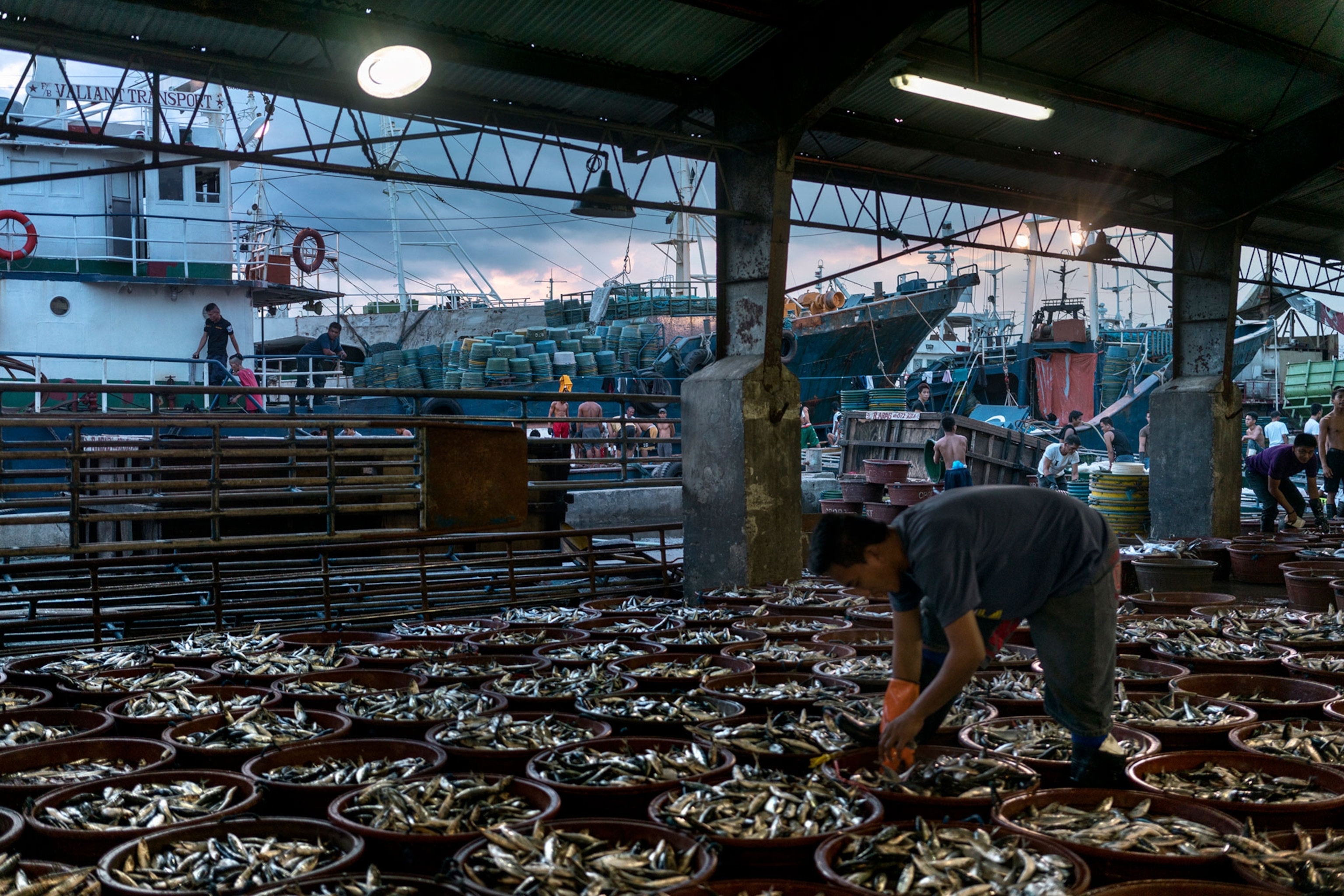
In 2012 a Philippine Navy warship tried to arrest Chinese fishermen at Scarborough Shoal, about 138 miles from the Philippine coast, on suspicion of illegal fishing and poaching rare corals, giant clams, and sharks. A Chinese coast guard ship intervened to prevent the arrests, forcing a standoff. Ten weeks later both sides agreed to withdraw, but after the Philippine warship left, China’s ship remained, effectively seizing control of the shoal.
As Filipino fishermen have seen their catches—and the fish themselves—getting smaller, they’ve increasingly been resorting to dangerous, illegal fishing methods. Blast fishing, which Filipinos call “bong bong” fishing, involves setting off homemade bombs underwater to kill dozens of fish at one time. Cyanide fishing, which involves squirting fish in the face with poison to stun them, is used to catch live reef fish to supply high-end live seafood restaurants in Hong Kong and other large Asian cities. Both practices kill coral and other fish, collateral damage that’s pushing the sea closer to an overfishing crisis.
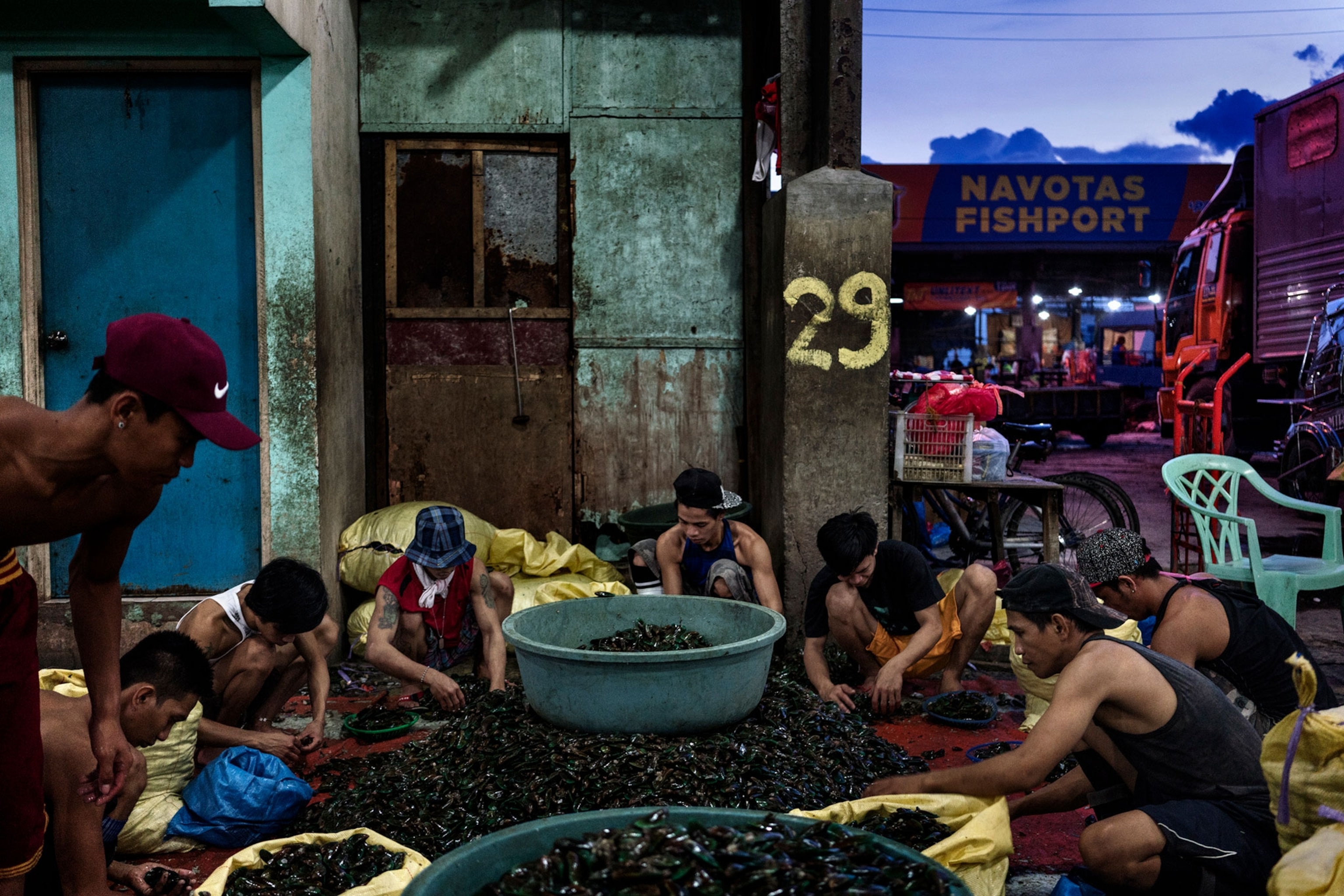
Reefs Under Siege
More destructive to the reefs, however, are China's island building and giant clam poaching, which account for most of the documented reef destruction in the South China Sea, an area totaling 62 square miles. Island building grinds up corals for use as foundation material, smothers reefs that become the base of islands, and creates sediment plumes that suffocate nearby reefs. Dredging to deepen ports also causes serious damage. And poaching of giant clams entails digging up entire areas of reef to get to the shells.
When a reef is destroyed, the ecosystem unravels. Reef fish lose their habitat, and pelagic fish such as tuna lose an important source of food. Reef fish lose their habitat, and pelagic fish such as tuna lose an important source of food. Furthermore, reefs in the South China Sea are connected. Fish larvae from one reef ride the current across the sea to repopulate another reef. If a reef disappears, so does that source of larvae, increasing the chance that local extirpations of fish species will be permanent.
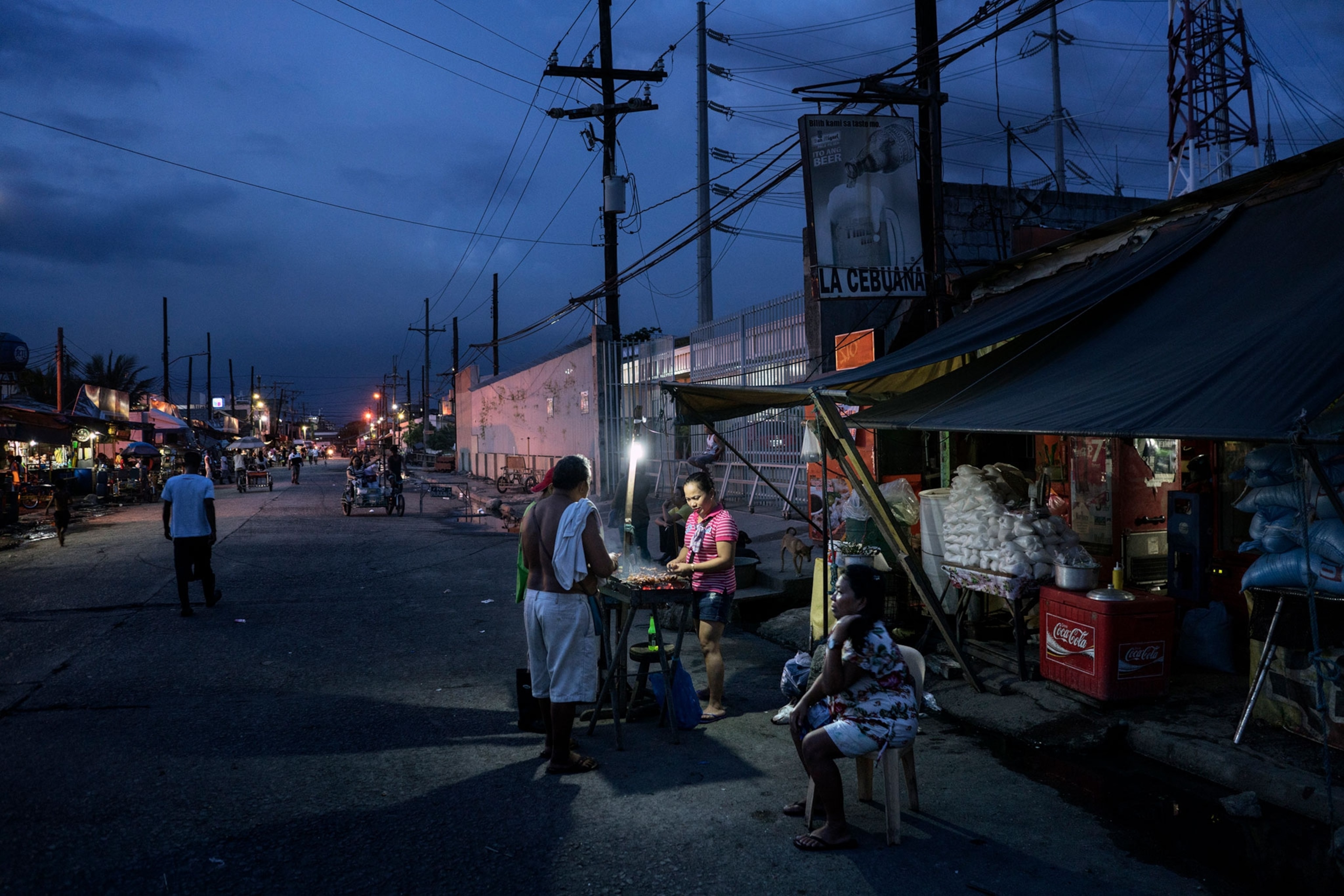
“It’s quite possible we’re seeing a serious decline in about half of the reefs,” McManus, the marine ecologist, says. “That’s what I expect will happen, if it hasn’t happened already. It’s just total destruction.”
McManus says that many of the damaged reefs will be able to recover in a decade or two—if the island building and destructive giant clam poaching stop. He champions the idea of a “peace park,” a kind of marine protected area where all countries would put a freeze on their claims and halt all activities, like island building, that bolster those claims.
Experts also say cooperative regional management could go a long way toward making the South China Sea fishery sustainable. It would require dramatic cutbacks in the number of fishing boats and restrictions on fishing methods such as the use of huge fishing vessels that use powerful lights at night to attract tuna. All this would in turn mean helping fishermen find other ways to earn a living.
Under a sustainable management plan, tuna and mackerel could recover 17-fold by 2045, Rashid Sumaila and William Cheung at the University of British Columbia predicted in a 2015 report. Reef fish would recover up to 15 percent, and the catch and value of reef fish would also increase. Sharks and groupers, which are also high-value fish, would make a comeback too.
But Poling, of the Center for Strategic and International Studies, questions whether such a plan could be devised in time to prevent the fishery from collapsing.
“What that requires is setting aside the disputes,” he says. “It’s possible—it’s just not likely. In order to have a successful joint management system, the first step is to agree on what area you’re talking about.” If China clings to its expanded jurisdictional claim while other countries base their claims on international law, agreement won’t be possible, he says.
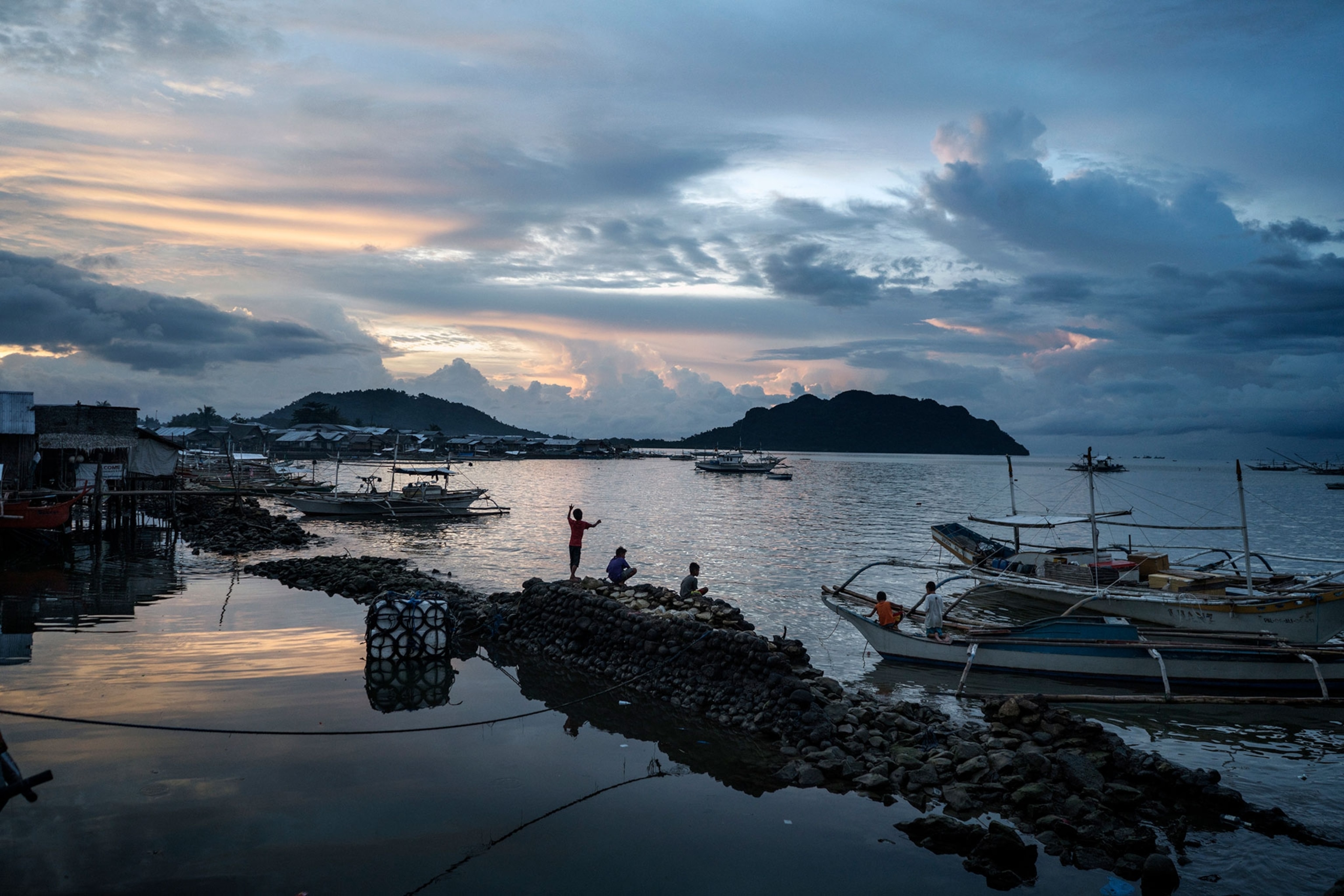
As it now stands, the South China Sea’s most important resource—its fish—is disappearing, and countries are either passively standing by or actively encouraging their fishermen to take more.
Aurora Almendral contributed to this report.
Read the other story in this series: China’s giant clam poaching is decimating reefs in the South China Sea.
This story was produced by National Geographic’s Special Investigations Unit, which focuses on wildlife crime and is made possible by grants from the BAND Foundation and the Woodtiger Fund. Read more stories from the SIU on Wildlife Watch. Send tips, feedback, and story ideas to ngwildlife@natgeo.com.
